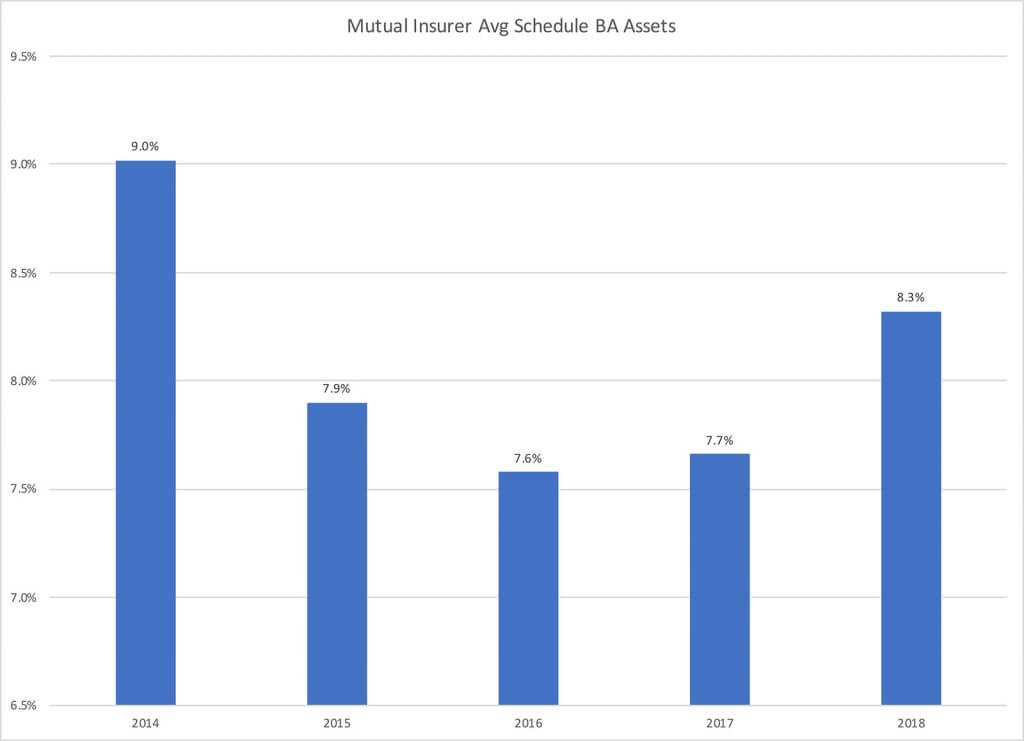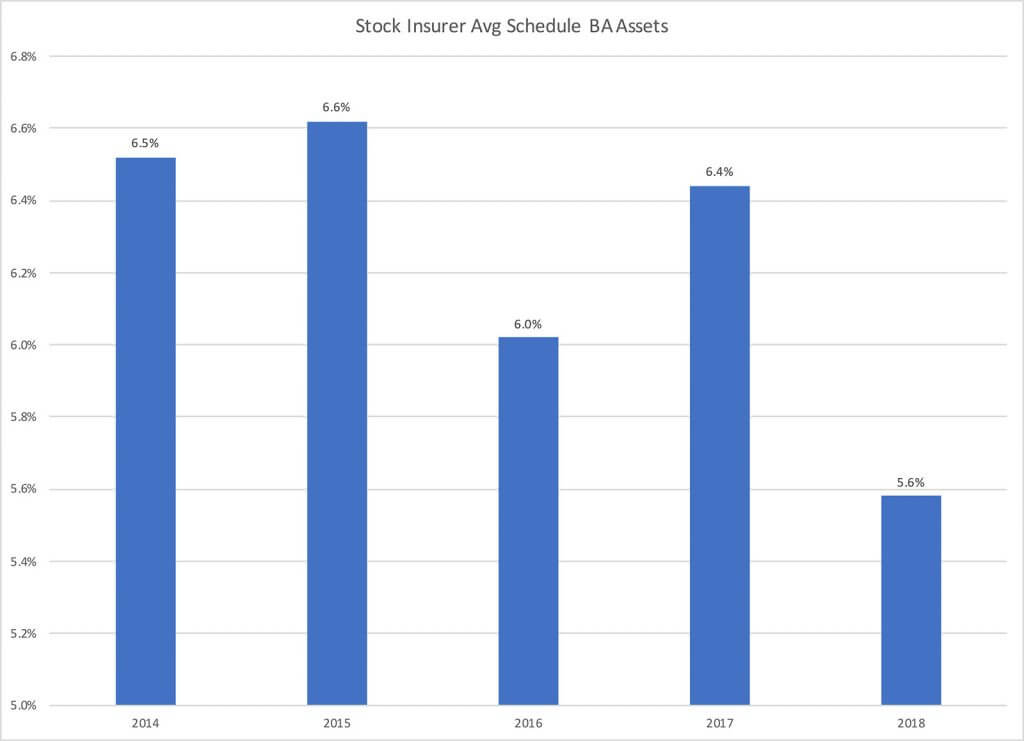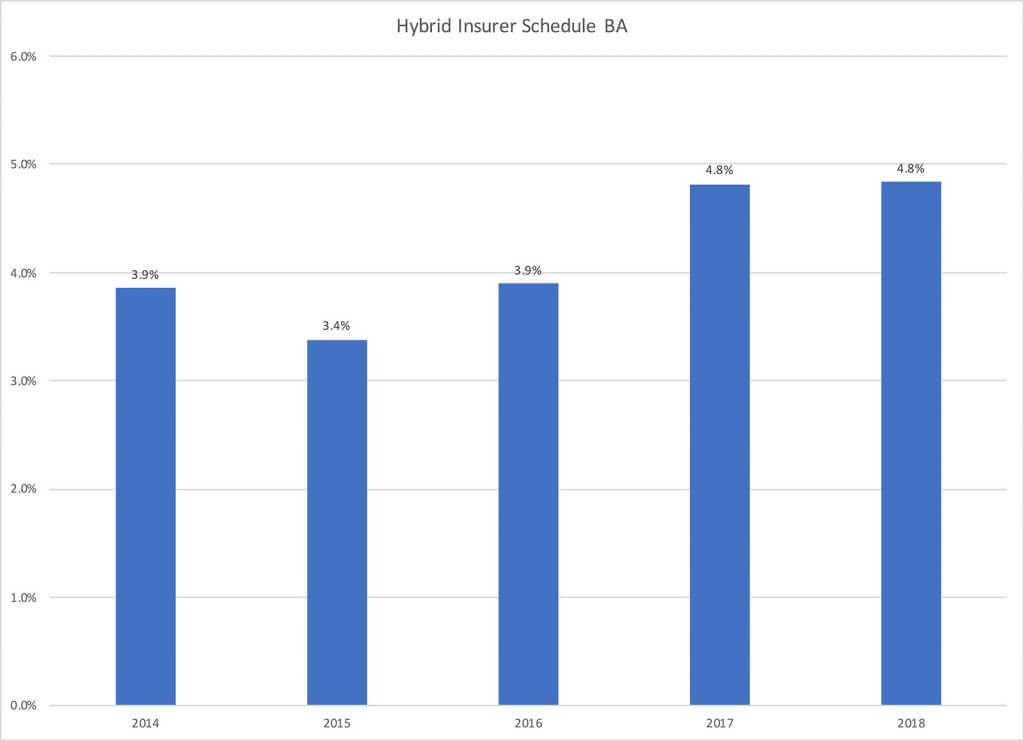It's no secret that interest rates are not in a place that life insurers favor. With interest rates so low, one might think that life insurers will move to more exotic investment ideas to recoup the returns they once had when buying bonds yielded near double digits.
It makes a lot of sense, actually. With bond yields staying low, life insurers shift to riskier Schedule BA investments to juice their returns. This almost sounds like a juicy exposé for the New York Times or Wall Street Journal. But such a story doesn't appear in either of those newspaper juggernauts nor any other major media outlet. The reason is three-fold:
- It's insurance, so who cares?
- What the hell is Schedule BA?
- It's not true!
Schedule BA Assets...the Alternative Investments
Life insurers must categorize their investment holdings and report the breakdown as part of the accounting they prepare for state regulators. They file these reports once a quarter and then one last big one encompassing the entire year.
Within this reporting, the insurer provides a detailed breakdown of its investment holdings. The reporting for assets its voluminous due to the intimate detail it provides about all the various assets the insurer owns inside the general account.
The asset categories life insurers use are:
- Bonds
- Stocks
- Policy Loans
- Real Estate
- Mortgages
- Cash
- Schedule BA
The first six are rather self-explanatory, but that last one probably throws most novices (and even veteran insurance insiders) for a loop. Schedule BA is the alternative investment category. It's where the more exotic investment holdings reside.
For all life insurers it comprises a modest amount of the overall assets held. It can, however, have a significant impact on returns the insurer achieves for the year.
Given this, I think it's reasonable to assume that insurers might look here to remain competitive and achieve higher returns while bonds continue to underwhelm.
Analyzing the Change in Schedule BA Exposure
Using statutory filing data, I looked up the change life insurers made during the past five years in the amount of schedule BA assets they held. I began by looking at the entire industry and then reviewed the changes in three category types of life insurers:
- Mutual Life Insurers
- Publicly Traded Stock Insurers
- Hybrid Insurers (i.e., Mutual Holding Companies or Privately Owned Life Insurance Companies)
For the industry as a whole, the change in Schedule BA for the past five years is nothing. The percentage of assets held under this category is the same as it was five years ago. There's slight (and I mean ever so small) change from one year to the next. But the direction is both up and down, finally landing exactly where it was five years ago.
But do things change when we put the company structure under the microscope? Yes. But not so much in the direction you might think.
Mutual Life Insurers and Schedule BA
Mutual life insurers trended down. The average year-over-year change during the last five years was -6.04% per year. There are two notable observations.
First, mutual life insurance companies do appear to be in a collective upward trend beginning last year. It's the first and only year out of the past five, where an aggregate increase in BA assets occurred.
Second, Northwestern Mutual and Penn Mutual have been on a schedule BA increase for the entire five year period. Penn Mutual has the highest investment returns out of the group during the five year period and perhaps the company's shift into schedule BA is responsible for some of that.
Stock Life Insurers and Schedule BA
Stock insurers are likely to have substantial schedule BA exposure, right? They have access to more cash through capital markets and likely employ very sophisticated investment strategies.
They hold a lower percentage of assets under schedule BA than mutual life insurers. This fact is true for all of the past five years. Stock life insurers also trended down when it came to the percentage of assets managed comprised of schedule BA.
The average year-over-year movement during the last five years is -3.53%. Only one insurer in the group, Transamerica, had a positive year-over-year change in Schedule BA.
Hybrid Life Insurers and Schedule BA
Hybrid life insurers are arguably the most diverse group among the three categories. Truthfully it's a catchall category for a somewhat hodgepodge of life insurers that don't quite fit the traditional makeup of being either fully mutual or fully publicly-traded stock company.
With these companies, the trend is up with an average year-over-year change during the past five years of 25%. But that figure needs some additional commentary because it's misleadingly large.
Some of the companies in this group had virtually no Schedule BA assets around five years ago and since increased to a moderate composition of this asset type. That fact skews the growth calculation significantly.
While the trend is up, this group holds the smallest percentage of Schedule BA relative to all assets out of all three categories.
Why this Matters
The fact that life insurers have, for the most part, not increased exposure to more exotic asset options speaks volumes about the asset management culture within the life insurance industry.
We often hold the industry in high regard for its reputed focus on safety and security. It's interesting to know that the industry appears to put that reputation ahead of an unrelenting focus on finding a place to chase higher returns.
So while life insurers experience the squeeze on bond yields, it's noteworthy that they, for now, choose to stay the course and steer clear of riskier bets. The life insurance industry is built on stability, and the evidence supports that insurers are focused on maintaining that stability.
Is Life Insurance for You?
Want to know if life insurance belongs
in your financial plan? Contact us today to find out.




